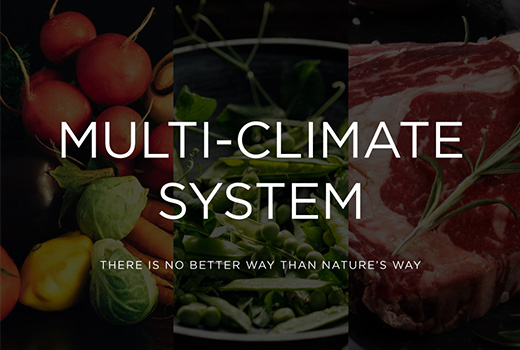The length of time we can store food and food safety are already central and will become ever more so to consumers’ purchase choices. The goal will be really effective antibacterial solutions with inspiration from the medical and air treatment sectors.
The pandemic has focused attention even more sharply on health and domestic hygiene, and on a desire for healthier eating. This has translated into a slow but growing movement towards a diet based on biological and vegan foods, vegetarian or vegetable based, as well as greater purchases of fresh fruit and vegetables. Storage time therefore bears a new and ever more significant role for consumers, as much as food safety.

Paradoxically, it is actually in the home refrigerator that this food safety risks being lower. From research commissioned by the English magazine Which? in 2019 we learn in fact that seven in ten refrigerators contain harmful bacteria, with the greatest risk of proliferation in the fruit and vegetable compartment. To overcome this phenomenon, caused essentially by an excess of humidity inside the compartment,the production world has turned towards solutions that are only partially capable of solving the problem. However, there is no doubt that the future of refrigeration is destined to move towards innovations capable of ensuring ever higher quality levels in terms of food preservation. It is equally true that at the moment there is no clear reference framework for evaluating this parameter.The current classification of household appliances is made on the basis of energy efficiency and does not take into account the quality of food preservation: the storage temperature that is now checked during energy tests is only one of the factors that contribute to proper food storage.
Yet something is moving. At the international level, the EIC in June 2020 published a first standard, currently unique, on the preservation and storage of food in the refrigerator. The legislation is not specifically dedicated to food preservation and, like all regulations, its application is on a voluntary basis. But this is the sign that we have begun and that we are working towards a future regulatory framework for this aspect as well.
On the technological front, the most significant innovations related to antibacterial treatments are probably the prerogative of the professional and medical world as well as the broader and more cross-sectoral one of air treatment (see box ndr). It is therefore to these sectors that we need to look, if not actually draw on the know-how necessary to develop dedicated antibacterial solutions for the refrigerator. In this context, HOMA as always intends to be in the forefront, applying these innovations as soon as they prove to be significant and really useful for its consumers.
Stayed Tuned for our next article: an in-depth interview with Luca Cantorelli, Senior Engineer from Studio Volpi.














.jpg?MTkyMHg3MjDvvIhkZXPvvIkuanBn)
.jpg?MTAyNHg3NDDvvIhkZXPvvIkuanBn)



















